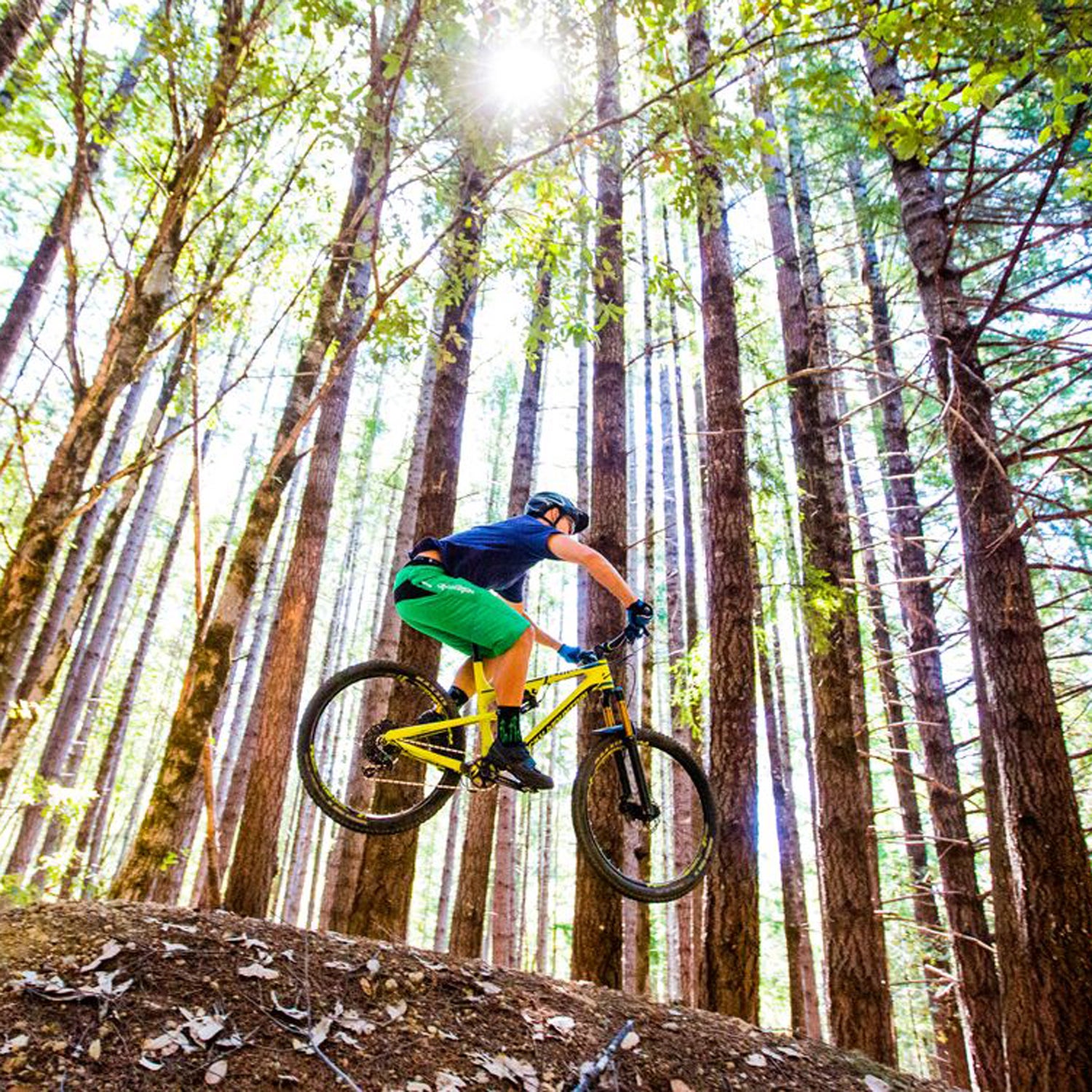The big news from last month wasn’t the surprise debut of some flyweight carbon-fiber über-mountain bike. Sure, plenty of those things were crawling around the slickrock—the opportunity to test ride the latest models, after all, is what draws hundreds of eager mountain bikers to this event in Moab each fall. This year, however, a bureaucrat stood before the dirty, Lycra-wearing masses and, frankly, stole the show with what amounted to a really cool PowerPoint presentation.
If that sounds a bit anticlimactic to you, a bit of context is in order.
The bureaucrat in question was Neil Kornze, director of the Bureau of Land Management. Kornze came to Moab with one message: He wants you to get out and ride. To that end, the BLM partnered with the and on a slick that links to mobile-friendly interactive maps and trail guides for 20 U.S. mountain bike destinations.
The feds, in short, want you to shred. That, for the record, is a major shift in policy—and it’s just the tip of the iceberg.
OUTSIDE: Why dedicate a chunk of your website to mountain biking?
KORNZE: It seemed to us that there was a gap, that no one at a national level in the public lands community was celebrating and embracing this particular group. This was an opportunity to reach out to the more than a million mountain bikers who ride trails on BLM lands each year. So, we’re starting by pairing this cutting-edge GIS data with stunning imagery that gets people excited about being out there on these trails.
What kind of response are you getting?
We did that rollout hoping the world would hear about it, and we received 40,000 hits within the first day or two. It’s been good.
Not everyone is a fan of mountain biking on public lands. Have you received any flak for stepping out in support of the sport?
We haven’t. I mountain bike myself and have for most of my life. I’ve seen good trails, and I’ve seen bad trails, but the thing about the mountain biking community is that for every popular trail out there, there’s almost always a group of dedicated riders taking care of it. There are a lot of good stewards out there. Part of what we’re doing with the site is showcasing examples of that.
Is there a chance other federal agencies will follow the BLM’s lead and embrace mountain biking with the same fervor that they embrace more traditional activities, such as hiking or camping?
I certainly hope that’s the case. On the national level, a lot of the public dialogue surrounding mountain biking is focused on wilderness and the conflicts between the mountain biking community, land managers, and other trail users when it comes to those areas. That’s a shame. There’s so much more that we agree on and can work together on. I saw this as an opportunity to celebrate the success stories that a lot of people aren’t aware of.
What kind of success stories?
, near Portland, Oregon, is a great example. A few years ago, it was just an old Forest Service road that a couple hundred people used each year. We worked with the mountain biking community to create a trail system there, and now it has more than 100,000 annual visitors. If we can get people out there—feeling the wind in their face and appreciating the outdoors as a regular and important part of their lives—everyone benefits.
This new section of your site seems to signal an acknowledgement that demographics in the outdoor community are shifting. Does the BLM have plans to reach out to other groups that were once seen as “fringe”?
In the past, the BLM was seen as a little old-fashioned. This new kind of resource on our site is and will continue to be an opportunity for us to show that we can be many things at once, including forward thinking. We’ll expand what we’re doing here—climbing is the most obvious option to me—but there are plenty of other areas to branch out into.
Our job at the end of the day is to make sure everyone has a seat at the table—hunters, hikers, mountain bikers, climbers. Everyone.


